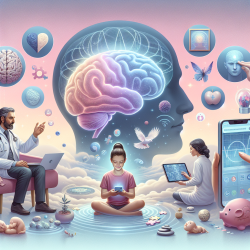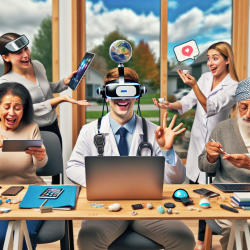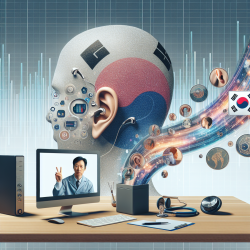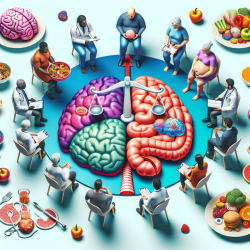Introduction
In recent years, the integration of smartphone technology into mental health care has garnered significant attention. The article "Smartphones in mental health: a critical review of background issues, current status and future concerns" provides a comprehensive examination of the potential and challenges of using smartphones in psychiatric practice. This blog aims to distill key insights from the research and offer actionable steps for practitioners to enhance their skills and outcomes in child therapy through technology.
The Current Landscape of Smartphone Use in Mental Health
Smartphones have revolutionized the way we communicate and access information. With built-in sensors and the ability to run various applications, smartphones offer a unique opportunity to monitor and assess mental health conditions. Despite the availability of numerous mental health apps, their integration into clinical practice remains limited due to issues such as consumer technology usage, clinical utility, and commercialization.
Challenges in Integration
One of the main challenges in utilizing smartphone data in mental health is the seamless integration of app-generated data into electronic medical records (EMRs). This integration is crucial for providing actionable insights to both psychiatrists and patients. However, technological, legal, and commercial barriers have hindered this process. Additionally, the uneven distribution of smartphone use across different demographics, including age and socioeconomic status, poses further challenges.
Recommendations for Practitioners
To effectively harness the potential of smartphones in mental health care, practitioners should consider the following recommendations based on the research findings:
- Maximize Patient Choice: Offer patients a range of technology options that align with their lifestyle, budget, and technical skills. This could include using emails or traditional phone calls in addition to smartphone apps.
- Enhance Digital Skills: Encourage the use of technology to improve digital literacy among patients. This can lead to better engagement and outcomes in therapy.
- Focus on Evidence-Based Apps: Select apps that have been clinically validated and offer evidence-based interventions. This ensures that the tools used in therapy are effective and reliable.
- Ensure Privacy and Security: Educate patients about the privacy policies of apps and ensure that data sharing complies with legal standards. This builds trust and encourages patient participation.
Future Directions
The future of smartphone integration in mental health care is promising, with advancements in voice-controlled interfaces and wearable technology. These innovations could further enhance the ability to monitor and support mental health conditions. Practitioners should stay informed about these developments and consider how they can be incorporated into their practice to improve patient outcomes.
Conclusion
Smartphones offer a powerful tool for enhancing mental health care, particularly for children. By addressing the challenges of integration and focusing on evidence-based practices, practitioners can leverage technology to improve therapy outcomes. For those interested in exploring this topic further, the original research paper provides a detailed analysis and can be accessed here: Smartphones in mental health: a critical review of background issues, current status and future concerns.










